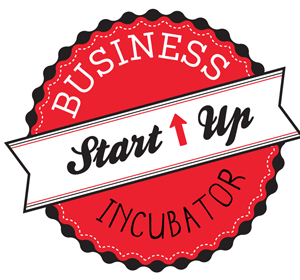 In the last few years, Digital Science has emerged as one of those companies you actually want to hear more about. In a market dominated by the big traditional publishers, Digital Science has provided us with a flicker of possible excitement in publishing ventures to come. They feel like a start-up: everyone who works there surely must be dressed in jeans and have tattoos and such. In fact, Digital Science is part of one of the familiar large corporate publishers – a privately held publisher, Macmillan – and, even closer to home for us STM publishers, is borne of Nature.
In the last few years, Digital Science has emerged as one of those companies you actually want to hear more about. In a market dominated by the big traditional publishers, Digital Science has provided us with a flicker of possible excitement in publishing ventures to come. They feel like a start-up: everyone who works there surely must be dressed in jeans and have tattoos and such. In fact, Digital Science is part of one of the familiar large corporate publishers – a privately held publisher, Macmillan – and, even closer to home for us STM publishers, is borne of Nature.
In this article I take a look at Digital Science. I will be your unreliable narrator basing my thoughts on an interview with Timo Hannay, Managing Director of Digital Science.
Digital Science essentially exists as a framework for small start-ups that are trying to make their way in and around the research and publishing ecosystems. What are the benefits and risks of this type of approach, for the scientist, the start-ups, and indeed Macmillan?
Talking to Timo was fun. Timo was formerly a research neurophysiologist, management consultant, Tokyo-based Nature.com publisher. He admits to being a bit of a geek. He is a mixture of boyish enthusiasm, inventiveness, and is mildly self-deprecating. Indeed when I asked about how Digital Science came about, he laid much of the credit for the idea of Digital Science at the feet of Annette Thomas, CEO of Macmillan Science and Education. Of course, Macmillan is a privately held company. Stefan von Holtzbrinck, (of the family that owns Macmillan) back in 2009 expressed interest in investing in the expansion of digital publishing. As Timo tells the story, Annette, Timo and others realized that Nature Publishing Group was serving the interests of the scientific research community in only one segment of the scientific research cycle. How could a scientific publisher become more than a publisher and support researchers at every stage of the discovery process?
The idea emerged that, rather than develop tools centrally within Macmillan, it could be more effective for Macmillan to incubate new start-up ventures that serve the scientific research publishing workflow. Timo’s job was to make this happen. Amusingly, before launch in 2010, the business was not named Digital Science. In fact, the business had been termed Project Babbage (after Charles Babbage– inventor, philosopher and mathematician). It only dawned on the founders of Digital Science a little later that naming a company after a genius who died penniless from his mix of successes and failures would perhaps not be an auspicious name for Macmillan’s digital venture. Digital Science has grown quickly, incorporating a number of start-up ventures across the research cycle, and you may investigate some of these on their own: well-known ones include Altmetric, Readcube, and figshare.
Does decentralizing product development enhance a start-up’s ability to thrive? What are the risks and potential benefits involved? Timo indicates that the through his work at Nature, it was clear that you could only do so much experimentation in the bounds of a company that in the end is squarely in the business of making a profit. NPG’s experiments certainly garnered attention, and helped brand NPG as an innovator, but in business terms it was a drain. Looking further afield, there were interesting start-up ventures emerging in the scientific publishing market place. From Macmillan’s point of view it looked to be potentially interesting to lend support to these ventures, not just to invest, and sell for financial gain as a venture capital firm might do, but to create a connected ecosystem of companies that are allowed to thrive and benefit from each other’s growth and technologies.
It is interesting to look at the tech world more broadly to gain an understanding of why this may be an interesting route for a company like Macmillan. Intel Capital is an interesting comparison. They are clearly in a different league, having invested $11.4 billion in 1,403 companies in 57 countries since 1991. The point of comparison for me comes from looking at Intel Capital’s mission. Intel Capital invests in companies in which Intel products are used to help create an ecosystem for their products. They invest in companies that help accelerate the adoption of technology in their markets. They are interested in ventures that allow them to sell their core products more effectively. They look to seed emerging technologies that may be useful in three to five years, even if there I no immediate benefit to the existing business.
Turning back to Digital Science, you can see the similarities. For Macmillan it makes sense to invest in start-ups in the STM market. For the start-ups, there is help to grow, and develop new products. They can feed off other start-ups in the group, sharing technologies and linking products. They can use the sales structure and trusted brand of Macmillan to enter markets they could not have previously managed to penetrate. If there is a risk here for the start-ups, it lies in some loss of freedom. In the end, they can’t just sell to the highest bidder, and Digital Science could decide to divest themselves of the company if needed. Timo says that it was also clear that decentralizing product development led to much more rapid innovation than if they had tried to merely acquire the business and incorporate them into an existing business structure.
I asked Timo about the future. Digital Science has a majority stake in most of the companies. In fact, according to Timo, Digital Science will purchase some of the companies in their portfolio outright. They may decide that a company is evolving for a market outside the purview of Digital Science and sell that entity.
Will Digital Science grow? A good question. It is not necessarily the time to expand the portfolio, according to Timo. There is so much expansion within the existing start-ups that there is enough on their plate. Having said that, when I asked about where he sees the toughest competition, he was clearly sensing a sea change in the way publishers are behaving in the market place. There has been a significant increase in the number of start-up business, and a number of these compete with Digital Science offerings. For Altmetric, perhaps instead you would go with Impact Story, or Plum Analytics (now part of the EBSCO family)? Or what about Springer Papers in place of ReadCube? There is also an uptick in Venture Capital interest in the publishing space.
As a society publisher, one question that I struggle with is how do outfits like Digital Science balance their drive for profit and their ability to serve the needs of researchers? At the American Mathematical Society, for example, we co-founded and lead MathJax, as an open source project. We think that it is with an open source venture that we will gain the most impact in the mathematical community. Timo, quite understandably and blatantly admits to his love of a healthy bottom line, and sees no conflict with efforts to serve the scientific researcher effectively. This is all fine, but I do have concerns about the incentives created by VC funding – that is profit, and not serving the research community. Will Digital Science drive its start-ups this way?
Discussion
1 Thought on "The Incubator Game: A Conversation with Timo Hannay – Managing Director of Digital Science"



